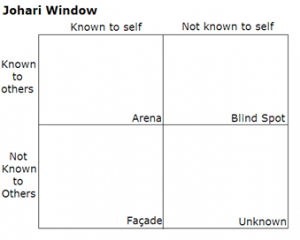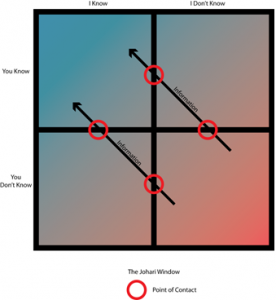The Point of Contact
By Kevin Barton, MLIS Candidate
Regardless of our roles as information professionals (or soon to be professionals), we all struggle with the same information needs as those we serve. And just as we all have information needs, we all have information to share. The goal is to match those needs and those resources through effective communication. Information and communication are wholly dependent on one another, like two sides of the same coin. In our professional or student careers and personal lives, we are all faced with a multitude of media services that we are forced to sift through in order to communicate effectively. Print media and broadcast media are only the tip of the iceberg, as the internet and all of its inherent technology has created a massive surge of information outlets that can be intimidating and overwhelming. I'd like to take this opportunity to simplify things, to consolidate that information searching process down to its most primal elements. To focus on a single idea, a solitary point, the point of contact.
The point of contact is that brief instant when information exchange actually occurs. It is a singular moment when comprehension is complete, and the communication process is fulfilled in regards to an individual idea or piece of information. We all deal with hundreds of these points every day, through conversation, reading, emails and web browsing. In each of these instances, there are several points where information is transferred, either from us or to us. Breaking down these instances, we can describe this transfer using a simple diagram. Initially designed as a psychology tool, the Johari Window was created by Josheph Luft and Harrington Ingham in the mid 50's. The tool was designed to help people understand their relationships with others, and themselves, by qualifying various personality traits.
We can adapt this tool to represent information exchange, as information passes between these areas when it is communicated between ourselves and others.
As you can see, there are specific points where information passes between the panes. These are the points of contact, and they occur in all types of communication and information exchange. For example: when you learn from your doctor that your blood pressure is a little high, the information travels from the lower right to the upper right when your doctor communicates the news. The point of contact is the verbal conversation you have with your doctor and the moment the information crosses the panes. Another example is when I send you an email about a new book you might like. The information travels from the lower left pane to the upper left pane. When you read the email, the point of contact is when you learn about the new book and the information crosses the panes.
In any given moment, each of us can only deal with one point of contact. Through my contributions to this blog, I'd like to move outward from that point, very gradually, and examine the tools and skills that can help manage that contact, both in the digital realm and through interpersonal communication. From news aggregators, blogs and social networking to listening skills and feedback, effective communication between individuals is an important part of developing information literacy. Recognizing the singular points where information is exchanged can help improve our information literacy skills, and in turn allow us to help others. Thank you for reading, and we welcome your comments.

